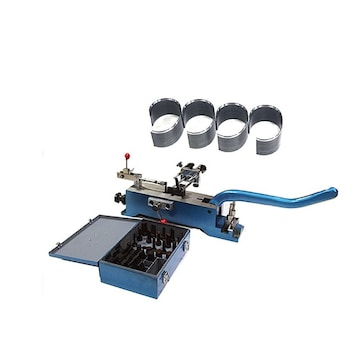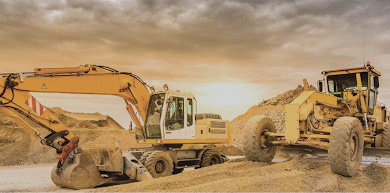Steel Rule Dies Designed for Precision and Efficiency

Steel rule dies have revolutionized manufacturing and production processes across countless industries. From packaging and textiles to automotive and electronics, these precision cutting tools deliver consistent, high-quality results that meet the demanding standards of modern production.
Whether you’re a manufacturer looking to streamline your cutting operations or a business owner exploring cost-effective production solutions, understanding steel rule dies can transform your approach to material processing. This comprehensive guide will walk you through everything you need to know about these versatile cutting tools, their applications, and how they can benefit your operations.
The precision and efficiency offered by steel rule dies make them an indispensable component in today’s competitive manufacturing landscape. Let’s explore how these remarkable tools work and why they’ve become the go-to solution for businesses seeking reliable cutting performance.
What Are Steel Rule Dies?
Steel rule dies are specialized cutting tools constructed from sharp steel blades (called steel rules) that are bent into specific shapes and mounted in a die board. These dies cut through various materials by applying pressure, similar to how a cookie cutter works but with industrial precision and durability.
The steel rules themselves are thin, razor-sharp strips of hardened steel that can be formed into virtually any shape or pattern. When mounted in a wooden or plastic die board, they create a complete cutting system capable of producing thousands of identical cuts with remarkable accuracy.
The versatility of steel rule dies lies in their customizable nature. Each die is typically designed for a specific application, whether it’s cutting cardboard packaging, fabric patterns, gaskets, or intricate decorative elements.
Key Components of Steel Rule Dies
Steel Rules
The heart of any steel rule die is the steel rule itself. These precision-engineered blades come in various heights, thicknesses, and hardness levels to accommodate different materials and cutting requirements. The most common heights range from 0.937 inches to 2 inches, with thickness varying based on the intended application.
Die Board
The die board provides the foundation that holds the steel rules in their precise positions. Made from high-quality plywood, plastic, or composite materials, die boards are laser-cut or machined to create grooves that perfectly accommodate the steel rules. The quality of the die board directly impacts the longevity and accuracy of the cutting die.
Ejection Systems
Many steel rule dies incorporate ejection systems such as foam padding or rubber strips that help remove cut materials from the die after each cutting cycle. This feature is particularly important for high-volume production runs where efficiency is paramount.
Applications Across Industries
Packaging Industry
The packaging industry relies heavily on steel rule dies for creating custom boxes, display cases, and promotional materials. These dies enable manufacturers to produce consistent, professional-looking packaging that protects products while enhancing brand presentation.
Textile and Apparel
Fashion and textile manufacturers use steel rule dies to cut fabric patterns, leather goods, and synthetic materials. The precision cutting ensures minimal waste while maintaining the exact dimensions required for assembly.
Automotive Sector
Automotive manufacturers employ steel rule dies for cutting gaskets, interior components, and various rubber and plastic parts. The consistency and reliability of these dies are crucial for maintaining quality standards in automotive production.
Medical and Healthcare
The medical industry utilizes steel rule dies for producing sterile packaging, medical devices, and disposable healthcare products where precision and cleanliness are absolutely critical.
Advantages of Using Steel Rule Dies
Cost-Effectiveness
Steel rule dies offer exceptional value for medium to high-volume production runs. While the initial investment may be higher than other cutting methods, the long-term cost per unit is significantly lower due to their durability and consistency.
Precision and Consistency
Each cut made with a properly maintained steel rule die is virtually identical to the last. This level of consistency is difficult to achieve with manual cutting methods or less sophisticated equipment.
Versatility in Materials
Steel rule dies can cut through an impressive range of materials including paper, cardboard, plastic, rubber, foam, leather, fabric, and thin metals. This versatility makes them valuable tools for businesses working with multiple material types.
Rapid Production Speeds
Modern steel rule die systems can produce hundreds or thousands of cuts per hour, dramatically reducing production time compared to manual cutting methods.
Minimal Material Waste
The precision of steel rule dies means less material waste during production. This not only reduces costs but also supports sustainable manufacturing practices.
Design Considerations for Steel Rule Dies
Material Thickness
The thickness of the material being cut directly influences die design. Thicker materials may require taller steel rules and more robust ejection systems to ensure clean cuts and easy material removal.
Cutting Complexity
Simple geometric shapes are straightforward to implement in steel rule die design. However, complex patterns with intricate details require careful planning to ensure the die maintains structural integrity while delivering precise cuts.
Production Volume
High-volume applications may benefit from additional features such as enhanced ejection systems, upgraded steel rule materials, or specialized coatings that extend die life.
Material Properties
Different materials have unique cutting characteristics. Soft materials may require different rule angles compared to rigid materials, and some materials may benefit from specialized blade coatings or treatments.
Maintenance and Care
Regular Inspection
Routine inspection of steel rule dies helps identify wear patterns, damaged rules, or loose components before they impact production quality. Visual inspection should be conducted regularly, with more detailed examinations scheduled based on usage volume.
Proper Storage
Steel rule dies should be stored in clean, dry environments to prevent rust and damage. Many manufacturers use dedicated storage systems that protect the cutting edges while keeping dies organized and accessible.
Cleaning Protocols
Regular cleaning removes material residue and adhesive buildup that can affect cutting performance. The cleaning method depends on the materials being cut and any adhesives or coatings involved in the production process.
Sharpening and Replacement
Even high-quality steel rules will eventually require sharpening or replacement. Establishing a maintenance schedule based on production volume and material types helps maintain consistent cutting quality.
Choosing the Right Steel Rule Die Solution
Assessing Your Needs
Before selecting a steel rule die system, carefully evaluate your production requirements including material types, cutting volumes, precision requirements, and budget constraints.
Quality Considerations
The quality of both the steel rules and die board construction significantly impacts performance and longevity. Investing in high-quality components typically results in better long-term value despite higher initial costs.
Customization Requirements
Most applications require custom-designed steel rule dies. Work with experienced manufacturers who can translate your specifications into effective die designs that meet your specific needs.
Looking Ahead: The Future of Steel Rule Dies
The steel rule die industry continues to evolve with advances in materials science, manufacturing techniques, and automation. New steel alloys offer improved durability and cutting performance, while advanced manufacturing processes enable more complex die geometries and faster production times.
Integration with digital design tools and automated cutting systems is making steel rule dies more accessible to smaller manufacturers while improving efficiency for large-scale operations. These technological advances ensure that steel rule dies will remain a cornerstone of precision cutting applications for years to come.
Steel rule dies represent a perfect blend of traditional craftsmanship and modern manufacturing precision. Their ability to deliver consistent, high-quality cuts across a wide range of materials makes them invaluable tools for businesses seeking to optimize their production processes while maintaining the highest quality standards.
For manufacturers ready to experience the benefits of precision cutting technology, steel rule dies offer a proven path to improved efficiency, reduced waste, and enhanced product quality. The investment in quality steel rule dies pays dividends through increased productivity and superior results that keep customers satisfied and businesses competitive.



